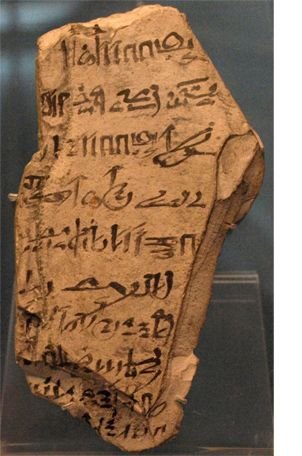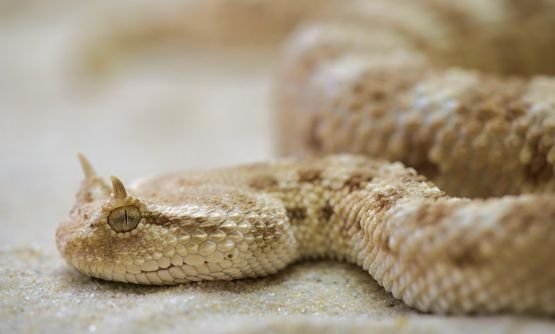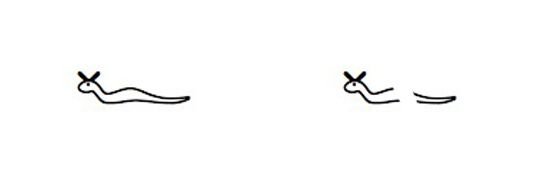EGYPTOLOGY: Ancient Egyptian Literature
Introduction to Ancient Egyptian Literature
Writing was one of the things the Ancient Egyptians are famous for. Most of you will likely think spontaneously of the hieroglyphs that are engraved in almost every wall, on the surface of columns, on the basis or backside of statues and so on. But also the papyrus was one of the media the Egyptians used to fix their thoughts on. So it may not surprise that even fairytales were created by these people.

Usually, those texts were repeatedly written by pupils in writing schools to improve their skills in handwriting, the so-called hieratic script. Handwritten hieroglyphs, done by a brush made of the fibre of the bulrush plant, were drawn sometimes quick and almost unreadable, but sometimes also in a quite artistic, calligraphic way. For the daily ephemeral notes, they used the so-called ostraca (singular: ostracon) – simple sherds of pottery or limestone. These are interesting sources of Egyptian texts since they give us a clue of the daily life and the habits of the populace. But when they used papyrus they prepared the text for a long period to be preserved. Papyrus was expensive because of its crafting based on an extensive process. Although papyrus was not made to last for eternity some special texts survived on it and are until today part of the Egyptological research. In the following, I want to present you one of the most beautiful ancient Egyptian fairytales.
(Picture left: Ostracon, CC BY-SA 3.0, Wikimedia)
The Tale of the Doomed Prince
This amazing fairytale was written on the backside of Papyrus Harris 500 which is currently displayed in the British Museum. Unfortunately, the end of the story is missing because the papyrus was burned.
It was created in the 18th dynasty (the New Kingdom, around 1450 BCE) and shows the significance of the concept of fate or destiny in the ancient egyptian mind. The protagonist is hit by three big life threatening challenges that he has to overcome before he can find his personal relief.
The Story
Once upon a time, there was a King in Egypt who wanted to have a child, but no son was born to him yet. So he prayed every day for his wife to give birth to a son. Finally, his wish came true, so the King called the Hathores, which were Goddesses of childbirth to predict the fate of the newborn baby. But their prediction was not what the King had been imagined for his child. They came to him and said, that his son would die in three possible ways: either by a dog, by a snake or by a crocodile.
By hearing that, the King was becoming extremely sad. In order to keep his baby safe for a long time, the King started building a big house with all beautiful furniture and stuff to make his son living comfortable but protected. He had everything he needed for a good childhood, but he was being refused to get out of the house.
One day the Prince looked out of his window on the roof and saw a little puppy in front of the house walked by a man. He called the man and asked him "What is that nice little one next to you?" The man answered, "This is a dog." And die Prince responded, "I want to have such a dog!". So the man went to the King and told him about his son's wish. The King was concerned but he agreed to give the puppy to his son to make him happy.

After some years and the Prince grew up, he asked his father: "Why should I stay here in this house? I want to go outside. And if there are still three dooms for me – as long as I live my life like my heart is telling me, God will do to me after His will." Again the King agreed and fitted his son up with the best weapons and the most protective equipment. And the dog was still right beside the Prince. So he went out to the desert and after a long journey, he arrived in a kingdom called Naharina.
In this country, the King was celebrating a feast in honour of his daughter with the aim to find an appropriate husband for her. So he held a contest for the applicants: the Princess was locked up in a high tower, while the men, begging for her heart, were jumping high trying to reach her window. The Prince didn't tell the people about his father, the King. Instead, he told everybody his mother would have died and his father would have taken another wife. After a while, the contest began and the prince jumped so high to reach the window of the Princess. So he had won the contest.
The King of Naharina was excited to hear the news that someone has reached the window of the Princess and asked: "From which kingdom is that prince coming from?" And the people told him: "He is not a prince, but the son of an officer who had married twice. This young man fleed from his stepmother since she received another child." The King of Naharina was surprised and suddenly refused his daughter to be married by such a man. But the Princess held on to the winner of the contest and said: "In the Name of Re-Harakhti – I will not eat and I will not drink. And I shall die in this moment!" So the King of Naharina sent out men to slay the Prince but when they arrived the Princess again said: "If you just put one hand on this man I shall die in the same moment!".
So the King of Naharina came to them and embraced them. He asked the Prince again: "Where are you from?" And he kept his version and answered: "I am the son of an officer from Egypt. My mother died, so my father married again and I had to flee." Now the King gave up his concerns and married his daughter to the man. He gave them fields and cattle and all that they needed to have a good life.
After a long period of time, the Prince began telling his wife about his three dooms. "It is my destiny to probably get killed either by a dog, a snake or a crocodile." The Princess was scared and told him to kill his dog, but the Prince refused "I will not let my dog be killed. I raised him from a puppy." The Princess, still scared, accepted it.

Copyright: Pixabay
After a while, the Prince decided to go abroad. He came to the city next to the land where he was grown up. The crocodile ... [here the papyrus is broken] ... There was a mighty man ... [ here the papyrus is broken] ... and the crocodile would not go out. The mighty man went out for a walk in the sun ... every day for two months. [here the papyrus is broken].

Copyright: Pixabay
After some time the Prince laid down to sleep. But his wife refused to get some rest. She put a bowl full of milk next to the bed of her husband as a snake came out of a hole to bite the Prince. Beholding the milk, the snake nipped from that bowl, became drunk and fell upside down. The Princess took the chance, killed the snake and cut it into pieces. After that, she woke up the Prince and said: "Look, your God has given you this doom in your hand. He shall give ... [here the papyrus is broken] ..." After that, the Prince started praying and adoring his God and his powerful spirit, every day.
After some time the Prince went out for a walk with his dog. The dog put his nose down to the ground and went away and the Prince came after him. He discovered a sea and the dog jumped into the water. The Prince followed him when a crocodile came out and said: "I am your doom ... [here the papyrus is broken] ... following after ..."
[here the papyrus breaks completely off]
Some Notes
Besides the funny "fact" that a snake can become drunk by milk (at least in that fairytale), it is interesting that the ancient Egyptians often "cut" unwanted things into pieces. They even did this in hieroglyphs, for example, when they feared a snake they draw the hieroglyph also in pieces.

Picture above: The egyptian hieroglyph with the phonetic value "f" normal and cut into pieces.
The crocodile part is quite fragmented and not easy to understand in the context of the doom. The meaning of this doom is still laying in the dark.
Until today the scholars are doing research on the explanation for the Prince's denial of his royal origin. Did he want to find "real love" aside from his status as a Prince? What do you think?
Unfortunately, nobody knows the end of that story. Will it be a happy ending or is the Prince really doomed? Tell me your opinion and feel free to use your fantasy to continue that narration. ;)
Sources and further reading:
• Burkard, Günter / Thissen, Heinz J., Einführung in die altägyptische Literaturgeschichte II. Neues Reich,Berlin 2008, pp. 7–17.
•Lichtheim, Miriam, Ancient Egyptian Literature, Vol.2, Berkeley 1976, pp. 200–203.
• Di Biase-Dyson, Camilla, The Characterization in the Doomed Princes, Online Chapter: Link, in: Foreigners and Egyptians in the Late Egyptian Stories, Brill 2013, DOI
When they come back, they come back in droves! After @abigail-dantes' recent return to posting, now we got you :D
How do you distinguish a fairytale from a myth? Is it just based on the ages of the people who believe it?
Male students.
Yup, female students.
Well the story is nice but it's a tease! I guess we'll each have to furnish our own ending till scholarship pulls back the curtain some more.
Danke für deinen interessanten Artikel.
Die Schrift und die Kultur der alten Ägypter
sind sehr beeindruckend.
Durch die Schriften der Ägypter
erhält man einen kleinen Einblick in ihre
Denkweise und Vorstellungen.
After having read it I feel like I am back in high school reading Homer :P
This post has been voted on by the SteemSTEM curation team and voting trail. It is elligible for support from @curie.
If you appreciate the work we are doing, then consider supporting our witness stem.witness. Additional witness support to the curie witness would be appreciated as well.
For additional information please join us on the SteemSTEM discord and to get to know the rest of the community!
Please consider setting @steemstem as a beneficiary to your post to get a stronger support.
Thanks for having used the steemstem.io app. You got a stronger support!